This is a Land Nourished by Mountains and Rivers,
A Province in the Central Yellow River Basin,
Where Ancient Civilizations and Rich Natural Resources Intertwine.
The Ancient Architecture Here is Truly Impressive
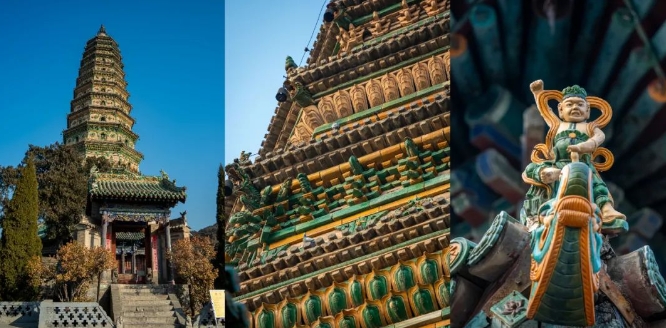
The Feihong Pagoda is the best-preserved ancient glazed pagoda in China. In 2018, it was recognized by the World Record Certification Agency as the world’s tallest colorful glazed pagoda.
The Murals Here are Well-Known

The murals from the Northern Qi Xu Xianxiu Tomb are now on display at the Northern Qi Mural Museum in Taiyuan.
The Bronzes Here are Remarkable
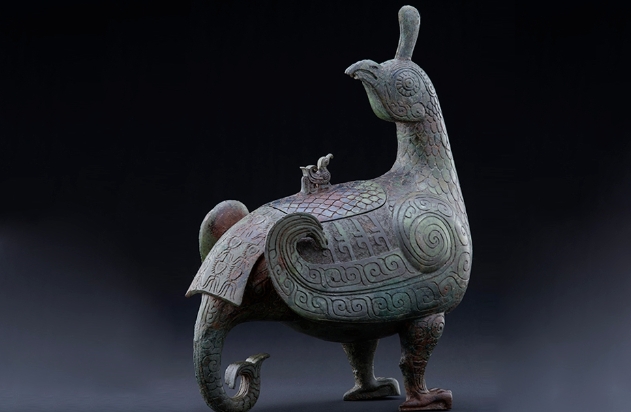
The Jin Marquis Bird Zun, unearthed from the tomb of the first ruler of the Jin State in the Western Zhou period, is over 3,000 years old and is a prized exhibit at the Shanxi Museum
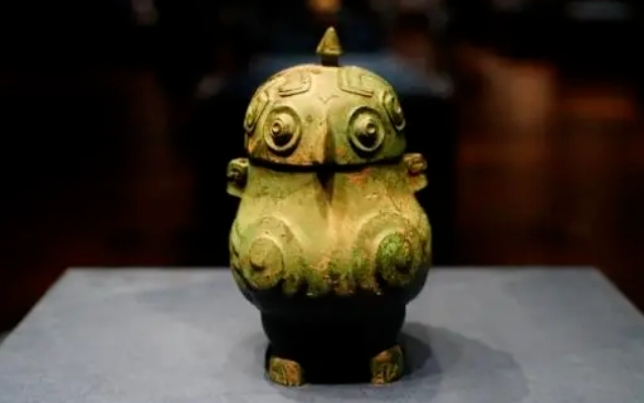
The Shang Dynasty Owl You, often called the ancient “Angry Bird” by netizens, also draws much attention
This Place is Also Considered
By Many
An Underappreciated “Cradle of Chinese Civilization”
It serves as a major integrated energy and power-exporting base for China, at one time illuminating half the nation. A key landmark in the evolution of Chinese civilization, this is where the “earliest China” was discovered. It is also the country’s first comprehensive reform pilot zone dedicated to transforming a resource-based economy on a provincial scale and the first comprehensive energy revolution pilot zone…
This is Shanxi,
A Land Cherished by Time,
An Ancient Land that Inspires Awe

In Shenlongwan Village, Pingshun County (formerly Jingdi Village), there’s a cliffside road locals call the “Taihang Sky Road.”
“Battle! If victorious, the allied lords will support you.
If not, with mountains and rivers for defense, no harm shall come.”
The Zuo Zhuan describes Shanxi with the phrase
“Surrounded by mountains and rivers,”
indicating that the region’s natural barriers of rivers and mountains provide protection and peace.

the Yellow River
Shanxi takes its name from its position to the west of the Taihang Mountains,
and its other name, “Jin,”
has a storied history.
During the early Western Zhou Dynasty,
a large-scale granting of territories to lords took place.
In the central and southern parts of Shanxi, over ten feudal states were established,
with the most prominent being the State of Jin.
In the Spring and Autumn period,
the State of Jin grew strong,
gradually annexing neighboring states
and becoming one of the Five Hegemons of the era.
In 453 BC,
the ruling families Zhao, Wei, and Han divided the State of Jin,
an event known as the “Partition of Jin.”
Thus, Shanxi is often called “Jin” and also known as “San Jin,” referring to the three states.
From the revered Martial Sage Guan Yu, known around the world,
to the Ming and Qing Dynasty merchants who wielded influence across Eurasia,
from the anti-Japanese battles in the Taihang Mountains
to Shanxi’s modern transformation today.
The Charm of Shanxi
Lies in its Majestic Beauty,
And even more in its Deep Simplicity and Strength

A glimpse of Yanchi Lake.
The Essence of Jin
Surrounded by Mountains and Rivers,
Shanxi’s heritage is as profound as its storied landscape.
The five-thousand-year history of Chinese civilization,
even traces of prehistory,
can be found on this ancient land.

Xihoudu Site.
1.8 million years ago,
in the Paleolithic Era,
ancient humans thrived here.
100,000 years ago,
the people of Ding Village began using stone tools.
“Where did my ancestors live? In the grand pagoda tree of Hongtong, Shanxi.
What was their home called? The old stork nest under the pagoda tree.”
This place carries the nostalgia of countless Chinese people.
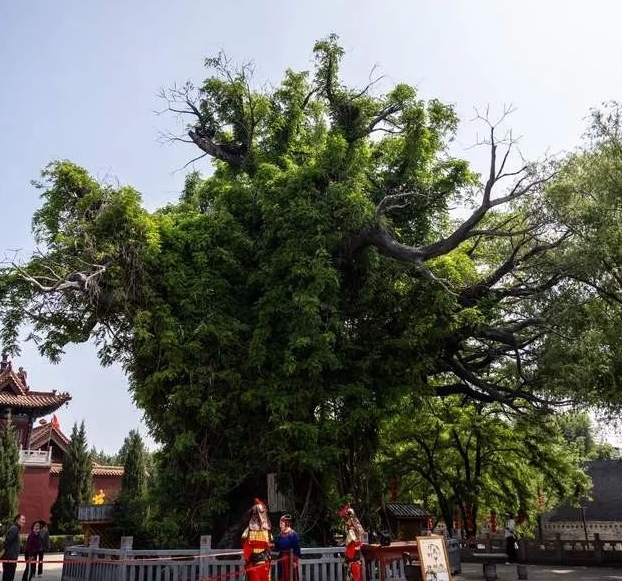
The Grand Chinese Scholar Tree in Hongtong.
In history, Shanxi’s recorded past stretches back three thousand years.
Martial Sage Guan Yu,
Poets Wang Bo, Wang Wei, and Wang Zhihuan,
and the famed “Honest Official” Yu Chenglong,
one generation after another,
have woven themselves into Shanxi’s legacy.

Yanmen Pass in Daixian, Shanxi, an essential Great Wall pass, has always been a strategic battleground.
This land has also nurtured
the farming culture of Emperor Yandi, the virtues of Yao and Shun,
Guan Yu’s loyalty, and the integrity of upright officials.
It has inspired
folk tales like Jie Zitui’s hidden life with his mother,
the Yang family warriors at the Battle of Golden Sands,
and Cheng Ying’s sacrificial protection of the orphan Zhao.

Yungang Grottoes.
The Essence of Jin
The essence is like aged wine,
its taste lingers long after the first sip,
leaving a rich, lasting flavor.
The essence of Shanxi
is worth savoring over and over.

Panshan Road in Xizhai, Xiyang County.
Rolling mountains and mighty rivers
carve countless ridges and valleys into the land.
Bordered by the Taihang Mountains to the east,
the Lüliang Mountains and the Yellow River to the west and south,
and the Great Wall to the north,
Shanxi’s geography resembles a leaf.
Here, mountains, hills, plateaus, and plains
all converge.
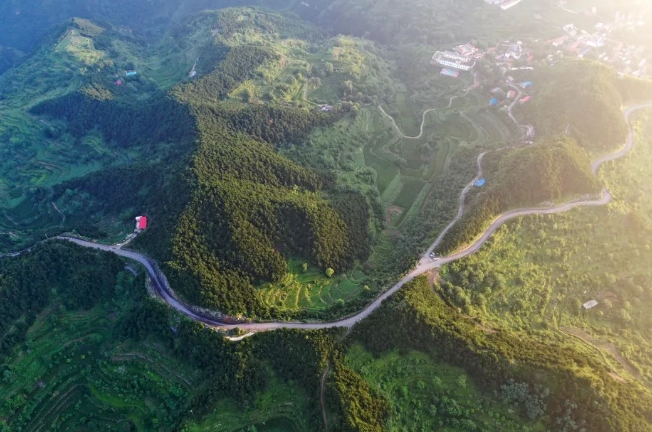
Taihang Mountains.
When it comes to Shanxi’s mountains,
point left to the Taihang Mountains—
thousands of peaks in a stunning display,
valleys competing in beauty,
with rugged, steep, serene, and picturesque scenes.
Point right, and there’s Lüliang,
its peaks stretch endlessly,
steep and richly diverse in vegetation,
carrying a bold, majestic presence.

Old Ox Bay in summer.
When it comes to Shanxi’s waters,
the Yellow River flows continuously,
and the “Mother River of the Three Jins,” the Fen River,
ripples and roars.
Mountains and valleys intersecting rivers
shape Shanxi’s climate with distinct seasons—
winters without severe cold, summers without intense heat.
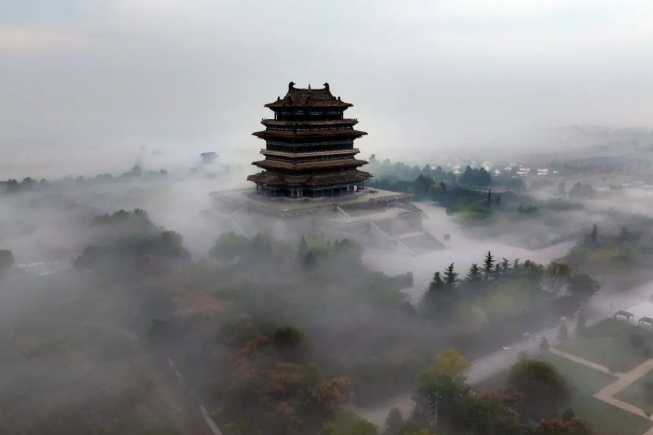
Guanque Tower.
Shanxi boasts beauty in its towering mountains.
“Five peaks soar, reaching the heavens, yet amidst them, one holds my teacher’s abode.”
—Zhang Shangying, Northern Song Dynasty, Mount Wutai
And beauty in its grand, unyielding landscapes.
“The sun sets behind the mountains; the Yellow River flows into the sea.
To see a thousand miles further, ascend another story.”
—Wang Zhihuan, Tang Dynasty, Climbing Guanque Tower
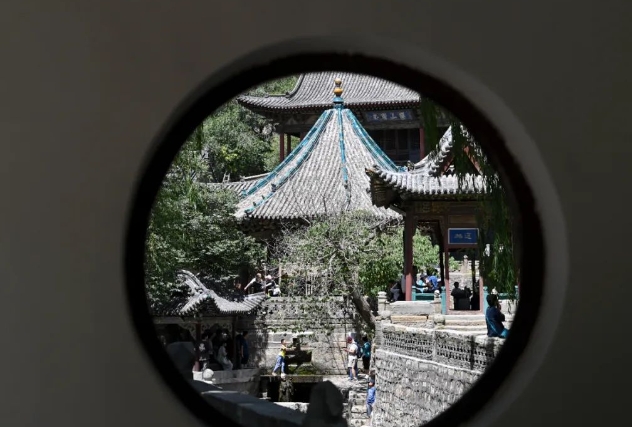
Visitors playing by the Nanlao Spring at Jinci Temple.
The Timeless Elegance of Ancient Charm
“Oft flowing westward from the city, Jinci waters green as jade.”
—Li Bai, Tang Dynasty, Recalling Old Travels, Dedicated to Yuan the Sub-Prefect of Qiao
There is beauty in the rippling emerald waters.
“Sail across the Fen River, waves rolling white in the midst.”
—Liu Che, Han Dynasty, Autumn Wind Ode

Aerial View of Yanqiu Garden.
There’s a beauty filled with bittersweet romance,
“Tell me, what is love, that it binds life and death together?”
—Yuan Haowen, Jin Dynasty, Ode to Yanqiu
Shanxi also holds a lingering beauty,
one that echoes softly through time.
As one of the birthplaces of Chinese opera,
stages from the Yuan Dynasty remain,
silently recounting stories of the past.

A Jin opera performer portrays Guan Yu, embodying loyalty, righteousness, and courage.
When the mood is high,
there’s an intense, blazing energy,
where drumbeats roll like thunder,
cymbals strike crisply,
and the clash of gongs resounds.
It’s all about power and presence.

Majestic Drums
Traditional drums, ancient and elegant, pure and robust,
radiate a strong artistic appeal and emotional intensity.
They’re a classic of Chinese drum music.
And if one takes a closer look,
there’s a delicate intricacy in the details.
Shanxi’s folk dough art is famous worldwide—
a universe within the dough,
a world in the palm of your hand.

Houzhou New Year Bread
The Aroma of Jin
“Yun” is an ancient term, meaning “rich fragrance,”
perfect for describing the flavors of Shanxi.

Shanxi’s noodles are a hallmark of traditional regional cuisine.
Noodles exude their fragrant essence—
steamed, boiled, fried, stir-fried, braised, or stewed.
From the art of making noodles to cooking styles,
from cooking techniques to flavors,
Shanxi’s people have created an endless variety.
The most famous is, of course, the knife-cut noodles,
served hot in a large bowl, releasing a delicious aroma.

Vinegar Jars
And there’s another scent,
one that makes your mouth water just thinking about it—
the rich, sour aroma of vinegar.
Shanxi people are masters at making and enjoying vinegar,
so much so that the ancient name for vinegar, “laoxi,”
has become a nickname for Shanxi locals.

The murals in Yongle Palace.

The main hall of Foguang Temple.

Qiao Family Courtyard.

The Rishengchang draft bank was founded in the third year of Daoguang in the Qing Dynasty, 1823 AD. It is known as the pioneer of modern banking in China and was once famous for “connecting the world”.

For more than 70 years, cadres and masses in Youyu have continuously carried out afforestation, creating an ecological miracle of turning “barren land” into an “oasis on the frontier”.

At the 100MW photovoltaic-storage integrated project base in Jishan County, Yuncheng City, Shanxi Province, rows of neat photovoltaic panels and the distant green mountains complement each other.
In recent years, while fully ensuring national energy security, Shanxi has comprehensively promoted the transformation and upgrading of traditional industries, the cultivation and expansion of emerging industries, and the forward-looking layout of future industries, and is fully committed to building a modern industrial system that reflects Shanxi’s characteristic advantages and vigorously implementing the “Shanxi Action” for carbon peaking and carbon neutrality.

Visitors are showing “hand-tearable steel” in the workshop of Shanxi Taigang Stainless Steel Precision Strip Co., Ltd. of China Baowu.
In 2023, in Shanxi, the proportion of advanced production capacity in the coking industry reached 96.6%, and the added value of industrial strategic emerging industries increased by 10.9%. The operating income growth rate of the first batch of 10 major industrial chains and 10 characteristic professional towns reached more than 20%.

The Yonghe section of the Yellow River No. 1 tourist highway in Shanxi Province under aerial photography.
Today’s Shanxi gives full play to its geographical advantages of connecting the east and the west, linking the south and expanding the north, actively connects with the “Belt and Road Initiative”, and continuously promotes high-level opening up.

The site of the 2023 Taiyuan Energy Low-Carbon Development Forum.
The comprehensive three-dimensional transportation network extends in all directions. The China-Europe (Central Asia) freight trains have achieved regular operation. Shanxi brand products continue to go abroad. The Taiyuan Energy Low-Carbon Development Forum, the Jinyang Lake Digital Economy Development Summit, the Shanxi Characteristic Professional Town Investment and Trade Expo, the “People in Shanxi, Beautiful Scenery” talent promotion activity… are attracting more and more attention.

Wind turbine generators filmed in Wanrong County, Yuncheng City, Shanxi Province.
Vigorously promoting industrial transformation, deepening the energy revolution, comprehensively deepening reform and opening up, promoting high-quality development, and deepening all-round transformation have become the main theme of Shanxi in the new era.

Aerial view of the Nanhuan Bridge in Taiyuan.
Seeking progress while maintaining stability and advancing with the times. Shanxi is “plowing and cultivating” in broader fields.

Aerial view of the scenery on both sides of the Fen River in Taiyuan.
Accompanied by the heroic journey of promoting high-quality development in all aspects, the people of Sanjin are proud of “Shanxi” and encourage themselves with “Shanxi”, striding forward towards a better life.





